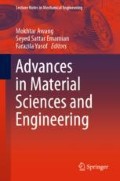Abstract
Friction stir spot welding (FSSW) technique was used to join aluminium (AA1060) to copper (C11000). The effect of process parameters on the residual stress and the full width at half maximum was studied. A copper ring was observed on both sides of the keyhole in all the fabricated FSS Welds. The surface morphology of the copper rings was examined using a scanning electron microscope; while the residual stresses were measured using the non-destructive X-ray diffraction method. The copper ring dimension in all the fabricated FSS Welds increased with the variation of the tool shoulder plunge depths; nevertheless, the welds fabricated at 1200 rpm rotation speed displayed a decrease in the dimension of the formed copper ring. In the analysed samples only compressive residual stresses were observed and highest residual stress of −116.8 MPa was obtained on the formed copper ring of the spot welds fabricated at a rotation speed of 800 rpm and 0.5 mm tool shoulder plunge depth. The presence of higher residual stress on the copper rings was due to the extrusion of copper into the aluminium sheet. Additionally, the intensity of all the peaks for the fabricated spot welds decreased in comparison to the peaks generated by the aluminium and copper base materials. Furthermore, the tool shoulder plunge depth affected the full width at half the maximum (FWHM).
Access this chapter
Tax calculation will be finalised at checkout
Purchases are for personal use only
References
Badarinarayan H (2009) Fundamentals of friction stir spot welding. Missouri University of Science and Technology
Rossini NS, Dassisti M, Benyounis KY, Olabi AG (2012) Methods of measuring residual stresses in components. Mater Des 35:572–588
Bach M, Merati A, Gharghouri M (2014) Effects of fatigue on the integrity of a friction stir welded lap joint containing residual stresses. Adv Mater Res 996:794–800
Fratini L, Pasta S, Reynolds AP (2009) Fatigue crack growth in 2024-T351 friction stir welded joints: longitudinal residual stress and microstructural effects. Int J Fatigue 31:495–500
Ma YuE, Staron P, Fischer T, Irving PE (2011) Size effects on residual stress and fatigue crack growth in friction stir welded 2195-T8 aluminium—Part I: experiments. Int J Fatigue 33:1417–1425
Altenkirch J, Steuwer A, Peel M, Richards DG, Withers PJ (2008) The effect of tensioning and sectioning on residual stresses in aluminium AA7749 friction stir welds. Mater Sci Eng, A 488:16–24
Lombard H, Hattingh DG, Steuwera A, James MN (2009) Effect of process parameters on the residual stresses in AA5083-H321 friction stir welds. Mater Sci Eng, A 501:119–124
Sun T, Reynolds AP, Roy MJ, Withers PJ, Prangnell PB (2018) The effect of shoulder coupling on the residual stress and hardness distribution in AA7050 friction stir butt welds. Mater Sci Eng, A 735:218–227
Heideman R, Johnson C, Kou S (2010) Metallurgical analysis of Al/Cu friction stir spot welding. Sci Technol Weld Joining 15(7):597–604
Badarinarayan H, Yang Q, Zhu S (2009) Effect of tool geometry on static strength of friction stir spot-welded aluminum alloy. Int J Mach Tools Manuf 49(2):142–148
Özdemir U, Sayer S, Yeni Ç, Bornova-Izmir (2012) Effect of pin penetration depth on the mechanical properties of friction stir spot welded aluminum and copper. Mater Test IN Join Technol 54(4):233–239
Vashista M, Paul S (2012) Correlation between full width at half maximum (FWHM) of XRD peak with residual stress on ground surfaces. Phil Mag 92(33):4194–4204. https://doi.org/10.1080/14786435.2012.704429
Acknowledgements
The authors acknowledge the financial support from the University of Johannesburg.
Author information
Authors and Affiliations
Corresponding author
Editor information
Editors and Affiliations
Rights and permissions
Copyright information
© 2020 Springer Nature Singapore Pte Ltd.
About this paper
Cite this paper
Mubiayi, M.P., Akinlabi, E.T. (2020). Measurement of Residual Stresses in Aluminium to Copper Friction Stir Spot Welds. In: Awang, M., Emamian, S., Yusof, F. (eds) Advances in Material Sciences and Engineering. Lecture Notes in Mechanical Engineering. Springer, Singapore. https://doi.org/10.1007/978-981-13-8297-0_34
Download citation
DOI: https://doi.org/10.1007/978-981-13-8297-0_34
Published:
Publisher Name: Springer, Singapore
Print ISBN: 978-981-13-8296-3
Online ISBN: 978-981-13-8297-0
eBook Packages: EngineeringEngineering (R0)

